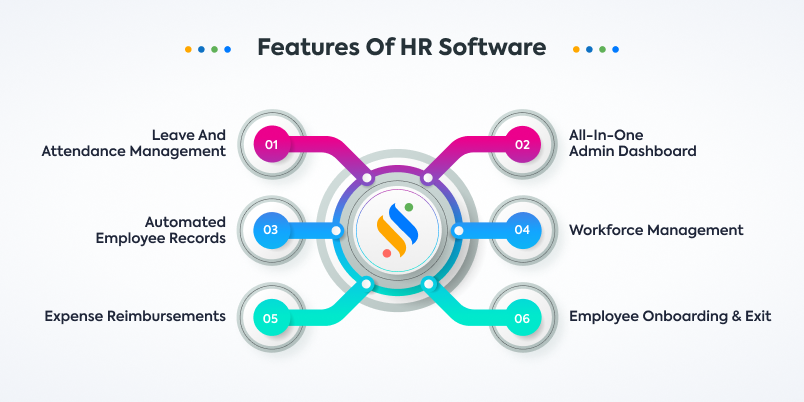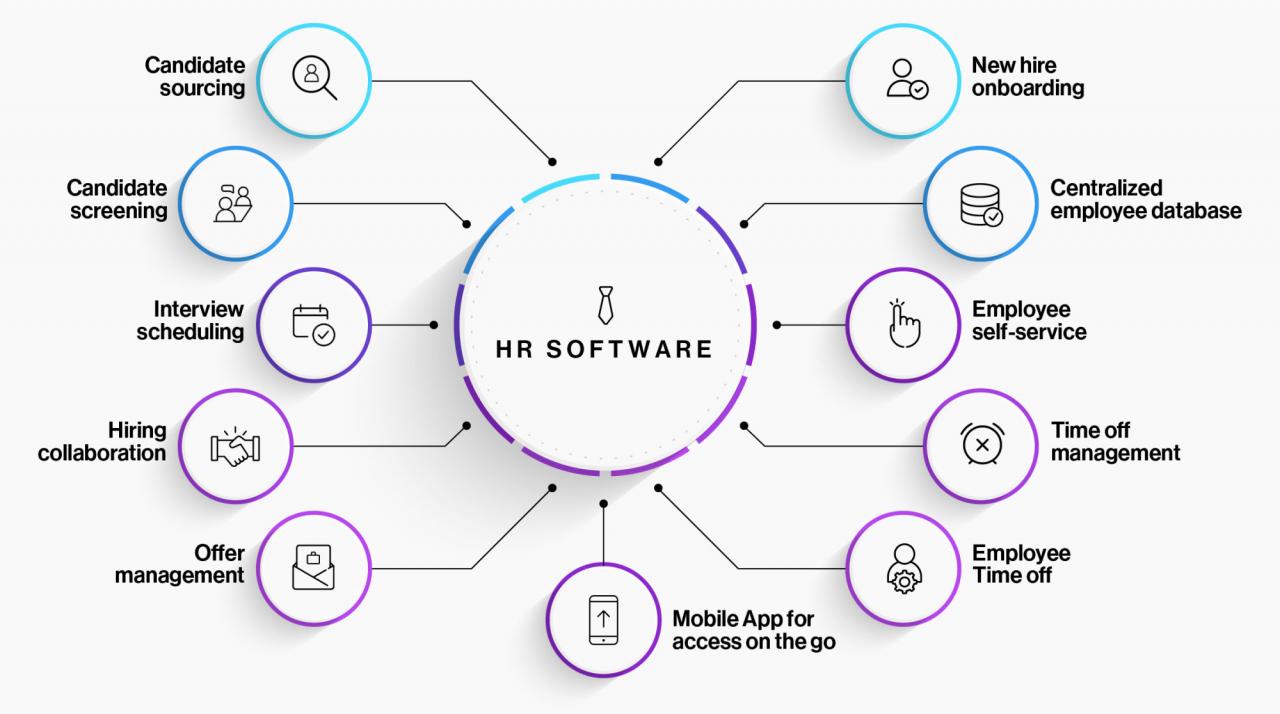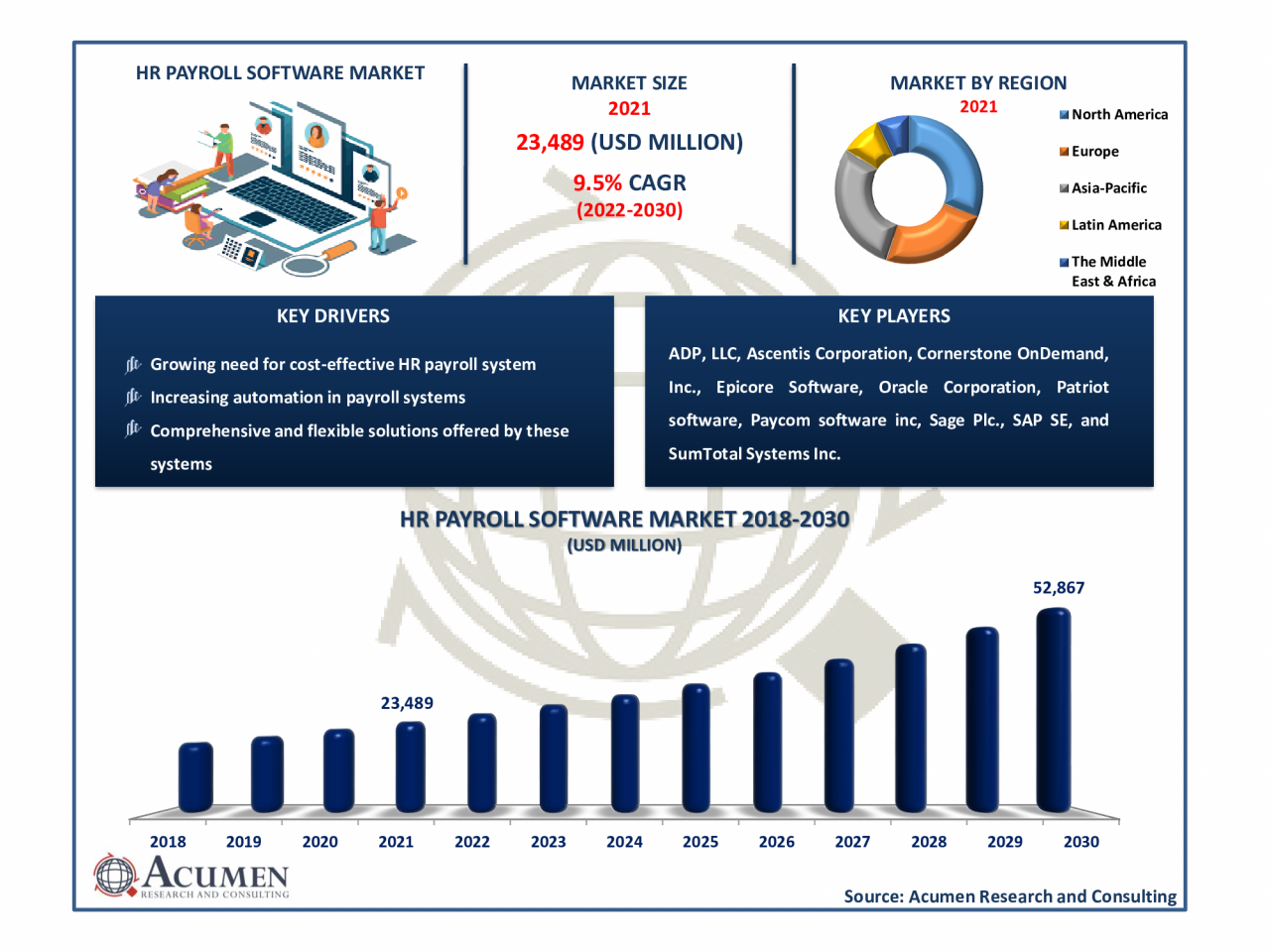Top HRIS systems with robust payroll and benefits administration capabilities are revolutionizing how businesses manage their human capital. Finding the right system can streamline processes, improve accuracy, and boost employee satisfaction. This deep dive explores the key features, market leaders, and crucial considerations when choosing a top-tier HRIS solution for your organization. We’ll unpack everything from seamless integration and data security to user experience and compliance, ensuring you’re equipped to make an informed decision.
From understanding the nuances of “robust” payroll and benefits administration to navigating the complexities of system integration and compliance, this guide offers a comprehensive overview of the leading HRIS systems available. We’ll compare pricing models, explore customization options, and highlight the critical reporting features that empower effective payroll and benefits management. Ultimately, this exploration aims to empower businesses to select an HRIS solution that perfectly aligns with their unique needs and contributes to their overall success.
Integration Capabilities and Data Security

Seamless integration and robust security are paramount when choosing an HRIS system, especially one handling sensitive employee data like payroll and benefits information. A fragmented system leads to inefficiencies, errors, and potential compliance issues. Conversely, strong security protocols are crucial for protecting employee privacy and maintaining the organization’s reputation.The importance of a unified system cannot be overstated. Effective integration between HRIS, payroll, and benefits modules streamlines administrative processes, reduces manual data entry, and minimizes the risk of human error.
This integration allows for a single source of truth for employee information, simplifying reporting, analysis, and decision-making. For instance, automatic updates to benefits enrollment based on changes in employment status prevent discrepancies and ensure accuracy.
Seamless Integration Between HRIS, Payroll, and Benefits Modules
Effective integration eliminates data silos and ensures consistency across all HR functions. Leading HRIS systems offer APIs and other connectivity options to integrate with various payroll providers and benefits platforms. This allows for real-time data exchange, eliminating the need for manual data transfer and reconciliation. For example, a change in an employee’s salary in the HRIS system automatically updates the payroll system, preventing discrepancies and ensuring accurate payment.
Streamlining HR processes with top HRIS systems boasting robust payroll and benefits administration is crucial for any organization. However, successful implementation hinges on understanding the broader picture of organizational efficiency; effectively managing customer relationships is equally vital, as highlighted in this insightful article on top challenges in CRM adoption and strategies for overcoming them. Ultimately, optimizing both HRIS and CRM systems contributes to a more cohesive and productive workforce.
This also facilitates the automated generation of benefits statements and reports, improving efficiency and accuracy.
Security Protocols Implemented by Leading HRIS Vendors
Leading HRIS vendors employ a multi-layered security approach to protect sensitive employee data. This typically includes data encryption both in transit and at rest, access controls based on roles and responsibilities, regular security audits, and compliance with relevant data privacy regulations like GDPR and CCPA. Multi-factor authentication (MFA) is a common feature, adding an extra layer of security to access the system.
Furthermore, many vendors offer features like intrusion detection and prevention systems to monitor and respond to potential security threats.
Data Encryption Methods Used by Three Different Top HRIS Systems
While specific encryption methods are often proprietary and not publicly disclosed for security reasons, we can discuss general approaches. Let’s consider three hypothetical leading HRIS systems – System A, System B, and System C. System A might use AES-256 encryption for data at rest and TLS 1.3 for data in transit. System B might employ a combination of AES-256 and RSA encryption, with secure HTTPS for data transmission.
System C might leverage a more advanced approach, potentially incorporating homomorphic encryption for specific data types to allow processing of encrypted data without decryption. It’s important to note that these are examples and the specific methods used by real-world systems can vary significantly. The key takeaway is that robust encryption is a fundamental aspect of data security in any reputable HRIS system.
User Experience and Reporting Features

Choosing the right HRIS system hinges significantly on its user experience and the reporting capabilities it offers. A clunky interface can lead to frustration and errors, while inadequate reporting tools hamper effective decision-making. Top-tier HRIS systems understand this, prioritizing intuitive design and robust reporting features for both HR professionals and employees.A streamlined user interface is crucial for efficient payroll and benefits administration.
Leading systems often boast a clean, modern design with clear navigation menus and intuitive dashboards. Employees should be able to easily access their pay stubs, W-2s, and benefits information with minimal clicks. Similarly, HR administrators need quick access to tools for processing payroll, managing benefits enrollments, and generating reports. The system should be adaptable to different user roles, providing each with a tailored view of the relevant information.
Payroll and Benefits Administration Interface Design
Imagine a system where accessing an employee’s pay stub is as simple as searching by name or ID, then clicking a single button. That’s the kind of seamless experience top HRIS systems aim for. Features like drag-and-drop functionality for benefit enrollment, automated reminders for open enrollment periods, and clear visual representations of benefit options (e.g., interactive cost calculators for health insurance plans) are common in user-friendly systems.
The color schemes and layout are usually designed for optimal readability and ease of use, minimizing visual clutter and maximizing efficiency. The system might even offer personalized dashboards displaying key metrics relevant to each user’s role, such as upcoming payroll deadlines or employee benefit enrollment status.
Types of Reports Generated
These systems generate a wide variety of pre-built reports covering various aspects of payroll and benefits. Standard reports might include payroll summaries, tax reports, benefit enrollment summaries, and cost analyses. Beyond pre-built options, the ability to design custom reports is a key differentiator. This allows HR professionals to tailor reports to their specific needs, analyzing data in ways that best suit their strategic objectives.
For example, one might create a custom report to analyze the cost-effectiveness of different health insurance plans, or track employee participation rates in specific wellness programs. Another user might need a report showing the distribution of employee salaries across different departments. The flexibility to create these bespoke reports is invaluable for data-driven decision-making.
Essential Reporting Features for Effective Payroll and Benefits Management, Top HRIS systems with robust payroll and benefits administration capabilities
Effective payroll and benefits management requires insightful reporting. Here are five essential features:
- Real-time Payroll Data: Access to up-to-the-minute payroll information, allowing for immediate identification and correction of errors.
- Benefit Cost Analysis: Detailed breakdowns of benefit costs by employee, department, or benefit type, enabling informed budget planning and cost-containment strategies.
- Compliance Reporting: Automated generation of reports required for regulatory compliance, minimizing the risk of penalties.
- Employee Self-Service Reporting: Employees can access their own payroll and benefits information, reducing the burden on HR staff.
- Customizable Report Design: The ability to create tailored reports to address specific business needs and track key performance indicators (KPIs).
Scalability and Customization Options: Top HRIS Systems With Robust Payroll And Benefits Administration Capabilities

Choosing the right HRIS is a long-term investment. It needs to not only meet your current needs but also adapt as your company grows and evolves. Scalability and customization are key factors to consider, ensuring your system remains efficient and effective regardless of your employee headcount or evolving business processes.Scalability in HRIS refers to the system’s ability to handle increasing amounts of data and user activity without compromising performance.
Customization, on the other hand, allows you to tailor the system to your specific workflows, ensuring seamless integration with your existing business practices. A robust HRIS will offer both, allowing for flexible growth and efficient management of your human resources.
System Adaptation to Growth
As businesses expand, their HR needs inevitably become more complex. A scalable HRIS can effortlessly accommodate this growth. For example, imagine a startup that initially uses a basic HRIS to manage a small team. As the company hires more employees, the system can easily scale to handle the increased data volume, user accounts, and payroll processing requirements. This avoids the costly and disruptive process of switching to a new system entirely.
Features like automated onboarding, self-service portals, and advanced reporting capabilities become increasingly valuable as the employee base grows, streamlining HR processes and improving efficiency. Many cloud-based HRIS systems are inherently scalable, automatically adjusting resources as needed without requiring significant IT intervention.
Payroll and Benefits Customization
Customization options within payroll and benefits administration are crucial for aligning the HRIS with specific company policies and legal requirements. Different HRIS platforms offer varying degrees of customization. Some allow for simple configuration changes through user-friendly interfaces, while others provide more extensive options through APIs and custom code development. These customizations might include configuring tax calculations for different locations, setting up custom benefit plans, or integrating with specific payroll providers.
For example, a company with a unique employee stock option plan could customize its HRIS to manage these options effectively. Another example might be a company with multiple locations in different states needing to customize payroll tax calculations according to each state’s specific regulations. This ensures compliance and avoids costly errors.
Hypothetical Scaling Scenario
Let’s consider a rapidly growing tech company, “InnovateTech,” which initially employs 50 people and uses a basic HRIS. Within two years, InnovateTech experiences explosive growth, hiring an additional 200 employees across multiple locations. Their existing HRIS struggles to keep up, leading to inefficiencies and errors in payroll processing. To address this, InnovateTech decides to scale its HRIS by upgrading to a cloud-based platform with greater scalability and customization options.
This involves migrating employee data, configuring the new system to match InnovateTech’s unique benefits and compensation structure, and training employees on the new platform. The new system’s ability to handle a larger employee base, integrate with other business systems, and provide advanced reporting capabilities significantly improves HR efficiency and reduces administrative overhead. This allows InnovateTech to focus on its core business rather than struggling with HR administration.